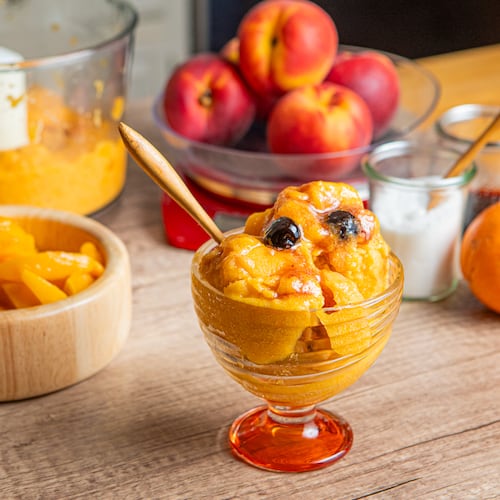I can think of only a handful of vegetables that I enjoy stir-fried all by themselves, with just a little garlic or a light sauce to enhance their flavor. Bok choy is one of them.
That’s because it seems like two vegetables in one: crunchy stems plus leafy greens. The taste is mostly mild, with a hint of its relatives cabbage and mustard.
Also spelled bok choi, pak choi or pak choy, this Chinese vegetable is known throughout Asia and increasingly in the United States. In addition to standing on its own in stir-fries, it also helps vegetable medleys, soups and curries.
The two most common varieties either have white stems with dark green leaves or light green stems with bright green leaves. Look for heads about 5 to 8 inches long, as they are more tender than really big bok choys. Avoid blemished or bruised stems or wilted leaves.
As if you needed another reason: If you weren’t already convinced of the benefits of organic vegetables, here’s more evidence. An analysis of national health data published this month in the journal Pediatrics links children’s attention-deficit hyperactivity disorder with exposure to pesticides used on conventionally grown fruits and vegetables.
Children with higher than average concentrations in their urine of a common pesticide, dimethyl thiophosphate, were twice as likely to have ADHD than children with undetectable levels, the study said.
Although these pesticides, a class of chemicals known as organophosphates, are pervasive, there’s a sure-fire way to significantly reduce your exposure to them: Stop eating them. A study published in 2008 in the journal Environmental Health Perspectives concluded that eating organophosphorus pesticides was the major source of exposure in young children. When those same children switched to organic fruits and vegetables, the concentration of pesticides in their urine dropped to undetectable or nearly undetectable levels.
My personal conclusion: Choosing naturally grown produce, raised without conventional pesticides and other artificial chemical compounds when possible, is a no-brainer.
At local farmers markets
Arugula, bok choy, cabbage, collards, fava beans, garlic, green garlic, hakurei turnips, herbs, kale, kohlrabi, Italian dandelion, lambsquarters, leeks, lettuce, mustard greens, onions, peaches, radishes, spinach, strawberries, sugar snap peas, Swiss chard, turnip greens
From farther afield
Looking good: California and Washington asparagus, Florida beans, Guatemalan blackberries, Georgia and California blueberries, Florida cantaloupe, California carrots and corn, California and Florida eggplant, California grapefruit, Chilean and Mexican grapes, Georgia and Carolina greens, Chilean kiwifruit, Florida okra, California oranges, Florida peppers, North Carolina and Florida raspberries, Florida and Georgia summer squash, North Carolina strawberries, Florida and Texas watermelon
Coming in: California apricots, Michigan asparagus, Georgia beans, Arizona cantaloupe, California cherries and grapes, Georgia eggplant, California nectarines, Georgia and South Carolina peaches, Georgia and California peppers, California watermelon
Variable quality: California artichokes; Texas and Mexican beets; Mexican blackberries, cantaloupe and carrots; Florida and Mexican corn, California lettuce, California and Guatemalan peas, California and Mexican raspberries, Oregon and Washington rhubarb, Mexican summer squash, California strawberries, Florida and Mexican tomatoes, Mexican watermelon
Local reports and the Packer
--------------------
Zippy Bok Choy
Hands on: 20 minutes Total time: 20 minutes Serves: 4
Although sweet and sour, this isn’t the supersweet “sweet and sour” sauce you know from Americanized Chinese cuisine. It leans more toward Thai, with a distinctly tangy-savory component. If you can’t find mushroom soy sauce, sold in specialty stores and some grocery stores, use regular soy sauce or a combination of soy sauce and fish sauce.
For the sauce:
4 cloves garlic, minced
1 tablespoon brown sugar
1 teaspoon peanut butter
Juice of 1/2 lime
3 tablespoons mushroom soy sauce or soy sauce
2 tablespoons Thai sweet chili sauce
For the stir-fry:
1 tablespoon canola or peanut oil
12 cups chopped bok choy (5 to 6 small heads), washed and dried
2 cups cooked basmati or jasmine rice
In a small bowl, combine the garlic, brown sugar, peanut butter, lime juice, soy sauce and chili sauce. Stir well and set aside.
Heat the oil in a wok or large sauté pan over high heat. Add the bok choy and stir-fry for 2 to 3 minutes. Add the sauce and continue cooking until the bok choy stems are crisp-tender, the leaves are wilted and the sauce is slightly thickened, about 3 more minutes. Serve the bok choy and sauce over the rice.
Per serving: 197 calories (percent of calories from fat, 23), 7 grams protein, 33 grams carbohydrates, 4 grams fiber, 5 grams fat (1 gram saturated), no cholesterol, 919 milligrams sodium.
About the Author
The Latest
Featured
